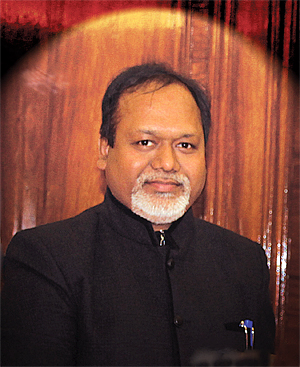INDIAN ARMED FORCES CHIEFS ON
OUR RELENTLESS AND FOCUSED PUBLISHING EFFORTS

SP Guide Publications puts forth a well compiled articulation of issues, pursuits and accomplishments of the Indian Army, over the years

I am confident that SP Guide Publications would continue to inform, inspire and influence.

My compliments to SP Guide Publications for informative and credible reportage on contemporary aerospace issues over the past six decades.
A Word from Editor-in-Chief
The positive results of the MiG-21 Type 96 solo flight by the CAS are immense and cannot be quantified, measured or assessed. This symbolic action by the CAS will help strengthen the bonds between officers and airmen in the IAF.

As the New Year dawned, the Indian Air Force (IAF) welcomed Air Chief Marshal B.S. Dhanoa, a fighter pilot of repute and with an impeccable professional credentials and an impressive career profile, who took over as the 25th Chief of the Air Staff from Air Chief Marshal Arup Raha who had been at the helm of affairs since January 1, 2014. Soon after taking over, Air Chief Marshal Dhanoa set a fine example of ‘leading from the front’ when he embarked on a solo mission on a MiG-21 Type 96 fighter aircraft at an air force base in the Western Sector. This has helped revitalise confidence of fighter pilots in the MiG-21 fleet and had a positive impact on the morale of personnel in the IAF.
Another factor that will help elevate the sagging spirits in the combat fleet of the IAF is the positive move the government has embarked upon in the recent past to select a proven single engine fighter aircraft for indigenous production under the ‘Make in India’ programme. The two contenders in the race are the F-16 Block 70 from Lockheed Martin Corporation of the United States and the JAS-39 Gripen NG from Saab of Sweden. Hopefully, the contract will be concluded shortly and the IAF will begin to receive the indigenously manufactured combat platform soon enough. A brief write-up on both these issues by Air Marshal B.K. Pandey (Retd) is included in this issue.
Aviation, both civil and military, continues to amaze us with all the technological developments that are taking place, to make flights faster, safer, environment-friendly and in the case of military, aircraft that are stealthy and lethal. It is an unending quest for the scientists, innovators, engineers and aviation enthusiasts. They are not flights of fancy, they are serious efforts and in this issue we take a peek into what the future of aviation may look like. From aviation geeks to aerospace behemoths such as Boeing, Airbus, National Aeronautics and Space Administration (NASA) and others, the quest to design and develop aircraft that are smarter, faster, eco-friendly and user-friendly with new materials, is a challenge. Despite the long research periods, they have continued with their efforts and by 2050 we should see some of them flying.
It is all about connectivity. The focus now, at least in India and some emerging economies, is on regional networking, so critical for national development. The good news is that the Ministry of Civil Aviation has received a good chunk of bids (65 in number) for the Regional Connectivity Scheme and we hope that some of them will start operating by March this year. There is so much to tap from the RCS as the Tier-II and -III segments are growing at phenomenal pace, where an operator may have to deploy the right aircraft to tap the market surge. The time is ripe for regional jets which have seating capacities between 70 and 140 and the players in this segment have started positioning themselves.
Along with regional jets, what is required for growth of regional aviation is the right-sized airport. In this issue, we have a case study of the Gulbarga airport, a greenfield facility, which when operational will showcase how it is possible to have a low-cost airport that is very functional and viable business-wise. The case study is presented by Jeori Aulman of the Netherlands Airport Consultants (NACO).
Another event that happened recently and deserves praise is the landing of three Mirage 2000 and three Sukhoi-30MKI aircraft on the Agra-Lucknow Expressway. Air Marshal Pandey writes how an efficiently managed model wherein designated landing strips on highways in the proximity of operational airbases are available during the war will have a force multiplier effect. Indeed, India’s military might is growing from strength to strength and this was on display at the Republic Day parade which had the Crown Prince of Abu Dhabi Sheikh Mohammed bin Zayed Al Nahyan as the chief guest.
Happy reading!





